Main menu
Common skin conditions

NEWS
Join DermNet PRO
Read more
Quick links
Author: Dr Kenneth Wong, Dermatology Registrar, Greenlane Hospital, Auckland, New Zealand, 2009.
Introduction Causes Symptoms and signs Complications Treatment
Blepharitis refers to inflammation of the eyelid margin. There are two variants based on the location of the inflammation:
Anterior blepharitis may have one of several causes.
Posterior blepharitis is the result of abnormalities of meibomian gland function in the inner eyelid. This gland normally produces oil, which is a component of the normal tear film. In blepharitis, the secretions from this gland thicken and block the gland.

Nonspecific blepharitis

Blepharitis due to rosacea
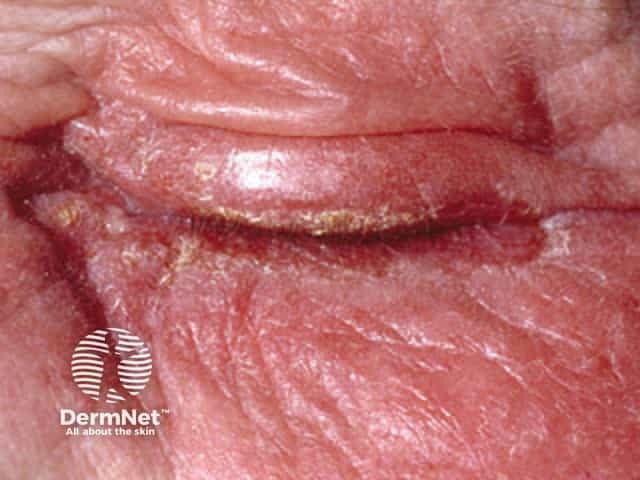
Contact allergy
Atopic dermatitis, seborrhoeic dermatitis and psoriasis affecting the eyelid may also result in blepharitis.
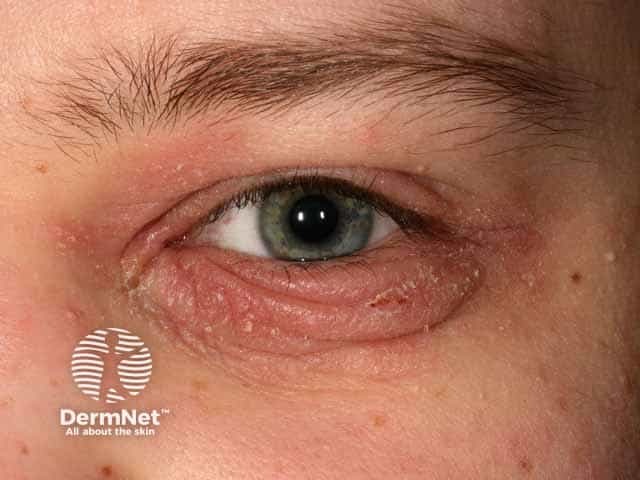
Atopic dermatitis
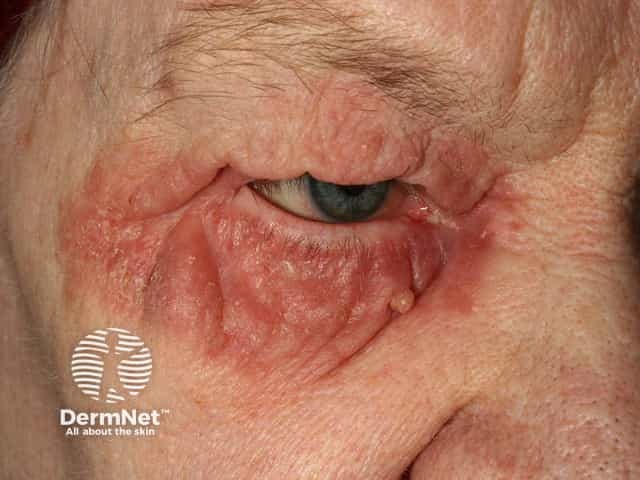
Seborrhoeic dermatitis
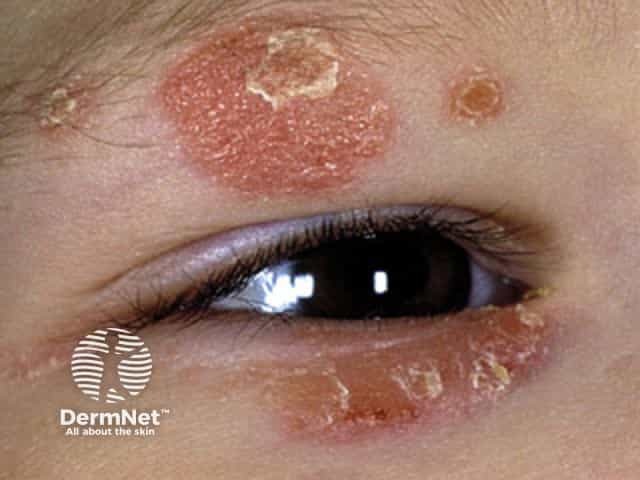
Psoriasis
Blepharitis is often uncomfortable.
It is also unsightly.
Complications from blepharitis include:
It is important to distinguish these from sebaceous carcinoma, a cancerous skin lesion that may rarely grow on eyelid skin.
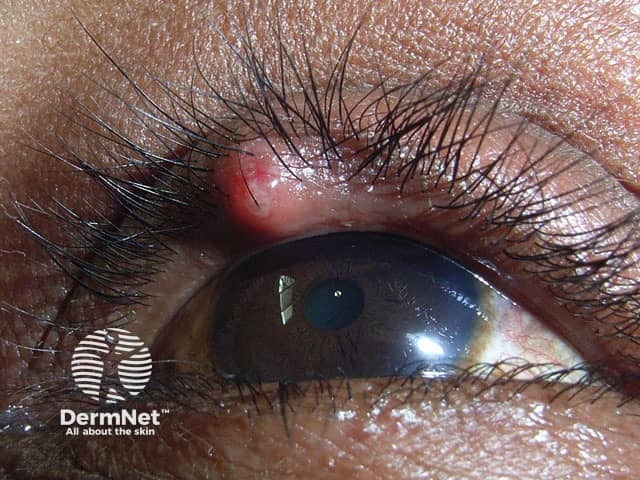
Stye
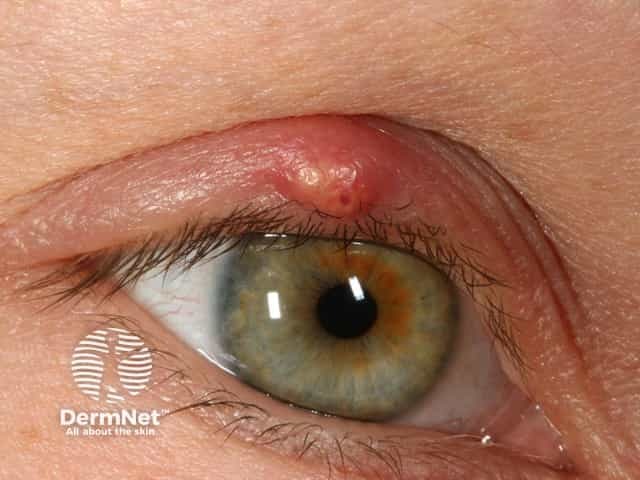
Stye
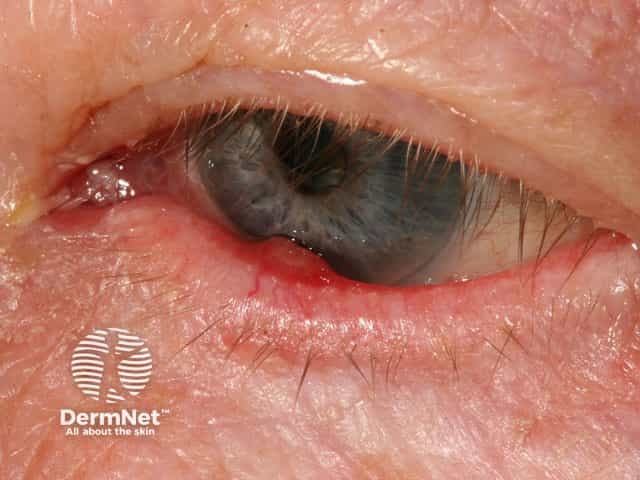
Chalazion
Treatment for blepharitis involves keeping good eyelid hygiene. Warm wet compresses applied to the eyelid will help to dislodge the crusts. The eyelid can be lightly scrubbed with a cotton swab using a mixture of water and baby shampoo.
In patients with posterior blepharitis, eyelid massage (firm presssure to the edge of the eylids at the base of the eyelashes) will help to clear the oil accumulated in the glands.
In severe cases of blepharitis, antibiotic or topical steroid eyedrops may be necessary. Where seborrhoeic dermatitis and rosacea are also present, these will need to be treated, usually with antifungal agents or oral tetracycline respectively.